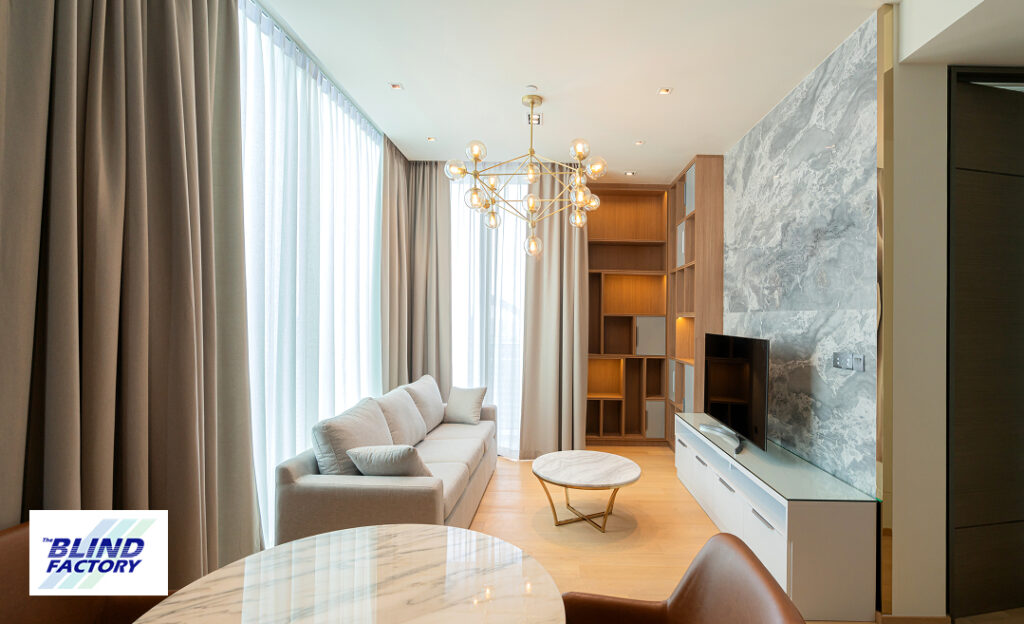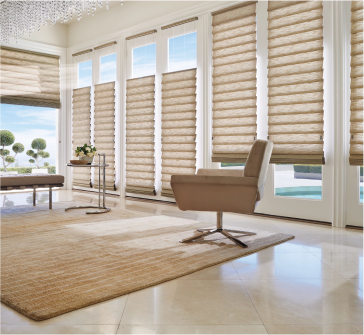When it comes to window treatments, there’s one question that stumps homeowners more than any other: how wide should curtains be? It’s a seemingly simple question with a surprisingly complex answer that can make or break your entire room’s aesthetic.
The truth is, curtain width affects everything from how spacious your room feels to how well your curtains actually function. Too narrow, and your windows look underdressed and awkward. Too wide, and you’ve wasted money on excess fabric that creates a cluttered appearance. But get it just right? Your windows become the stunning focal point they were meant to be.
Whether you’re hanging floor-length curtains in your living room or choosing the perfect drapery panels for your bedroom, understanding proper curtain width is essential. Let’s explore the science and art behind curtain sizing, so you can achieve that polished, designer look in every room of your home.

The Golden Rule: Understanding Curtain Width Basics
When it comes to determining how wide curtains should be, there’s a fundamental rule of thumb that interior designers swear by: your curtains should measure 1.5 to 3 times the width of your window. This might seem like a broad range, but there’s method to this flexibility.
The lower end of this range (1.5 times the window width) works well when you want a more tailored, streamlined look or when you’re dealing with functional curtains like blackout curtains that need to lie relatively flat against the wall for maximum light control. The higher end (2.5 to 3 times the window width) creates that luxurious, full appearance that makes drapery panels look professionally styled and adds elegant volume to your room.
This principle applies whether you’re hanging curtains that reach the floor length or shorter panels that stop at the window sill. The proper curtain width ensures your window treatments look intentional and polished, rather than like an afterthought. Standard curtain widths from manufacturers typically account for this rule, but custom curtains give you the flexibility to achieve the exact proportions your space demands.
Measuring Your Windows Like a Pro
Before you can determine the ideal curtain width, you need accurate measurements. Grab your tape measure and let’s walk through this process step by step.
Start by measuring your window frame width—this is your baseline measurement. However, your curtain width shouldn’t stop there. Consider how far beyond the window frame you want your curtain rod to extend. Most interior design experts recommend extending the rod 4 to 8 inches beyond each side of the window frame. This rod placement allows your curtains to frame the window beautifully when opened, rather than blocking precious natural light.
Next, measure from where your curtain rod will be positioned to determine the total width your curtains need to cover. This measurement becomes your “window width” for calculating curtain panel width. Don’t forget to account for any architectural features like crown molding that might affect your rod placement or the way your curtains hang.
For curtain length, measure from your planned rod placement down to your desired endpoint. Floor-length curtains should typically hang about half an inch above the floor for a clean look, though some designers prefer curtains that just “kiss” the floor or even puddle slightly for a more dramatic effect. If you’re opting for curtains that end at the window sill, measure to about 4 inches below the sill for the most flattering proportions.
Remember to measure each window individually, even if they appear to be the same size. You’d be surprised how often windows in the same room have slight variations that can affect your curtain sizing.

Choosing the Right Width for Different Curtain Types
Not all curtains are created equal, and different types of window treatments have varying width requirements to function and look their best.
Blackout curtains require special consideration for proper curtain width. Since their primary purpose is light control, they need enough extra width to eliminate light gaps when closed. For blackout curtains, aim for the higher end of the width range—at least 2 to 3 times the window width. This ensures the fabric has enough fullness to block maximum light while still looking elegant when drawn.
Sheer curtains, on the other hand, are all about creating a soft, ethereal look. These lightweight window treatments benefit from generous width, often 2.5 to 3 times the window width, to achieve that beautiful, billowy appearance that makes rooms feel dreamy and romantic. The extra fabric width helps sheer curtains maintain their delicate draping even when exposed to air currents from heating and cooling systems.
When deciding between two panels versus one curtain panel, consider both function and fabric width. Two panels are more common and practical for most windows, allowing you to draw curtains open from the center. However, very narrow windows might look better with a single panel that draws to one side. Keep in mind that each curtain panel should still follow the width guidelines – if you’re using two panels, each should be 0.75 to 1.5 times the window width.
The combined width of your drapery panels should always meet that golden ratio we discussed earlier. Standard curtain widths from manufacturers are designed with this in mind, but custom curtains allow you to achieve perfect proportions regardless of your window size.

Interior Design Considerations
Curtain width plays a crucial role in your room’s overall aesthetic and can dramatically impact how large and bright your space feels. Wide curtains that extend well beyond the window frame create the illusion of larger windows and, consequently, a more spacious room. This technique is particularly effective in smaller spaces like dining rooms or bedrooms where you want to maximize the sense of openness.
The relationship between your curtains and other elements in the room matters too. In rooms with high ceilings, full-height curtains that extend from the ceiling to the floor can make the space feel grand and cohesive. The curtain width should be proportional to this vertical expanse – skimpy curtains on tall windows look particularly awkward.
Consider your wall space as well. If you have limited wall space on either side of your windows, you might need to adjust your rod placement and curtain width accordingly. The goal is to achieve proper proportions while working within your room’s constraints.
For maximum light when curtains are open, make sure your curtain width calculation allows the panels to clear the window frame completely. This is where that extra width beyond the window becomes crucial—it’s not just about how curtains look when closed, but how effectively they can reveal your windows when opened.
Common Mistakes and Pro Tips
One of the most common curtain width mistakes is choosing panels that are too narrow, leaving the window frame partially exposed even when the curtains are closed. This creates an unfinished look and defeats the purpose of window treatments. Always err on the side of too wide rather than too narrow.
Another frequent error is not accounting for the curtain panel width when the fabric is gathered or pleated. Pinch pleats and pencil pleats require additional fabric to create their characteristic folds, so factor this into your width calculations. What appears to be adequate fabric width when laid flat may look skimpy once pleated.
Here’s a pro tip: when in doubt about curtain sizing, measure twice and order once. Taking the time to double-check your measurements can save you from the frustration and expense of ill-fitting curtains. If you’re working with particularly challenging windows or want that perfect custom look, don’t hesitate to consult with professionals who specialize in custom window treatments.
Creating Your Perfect Window Treatment
Getting the curtain width right transforms your entire space, creating windows that look intentionally and beautifully dressed. Remember that proper curtain width isn’t just about aesthetics—it affects how well your curtains function for light control and privacy, too.
Whether you choose standard curtain widths or invest in custom curtains, following these width guidelines will ensure your window treatments enhance your home’s beauty and functionality. The extra time spent measuring and calculating pays dividends in the final result – curtains that look like they belong in a magazine spread rather than a home improvement mistake.
Ready to achieve that perfect curtain width for your space? Professional consultation can help you navigate the nuances of curtain sizing and create window treatments that truly complement your home’s unique style and proportions.

